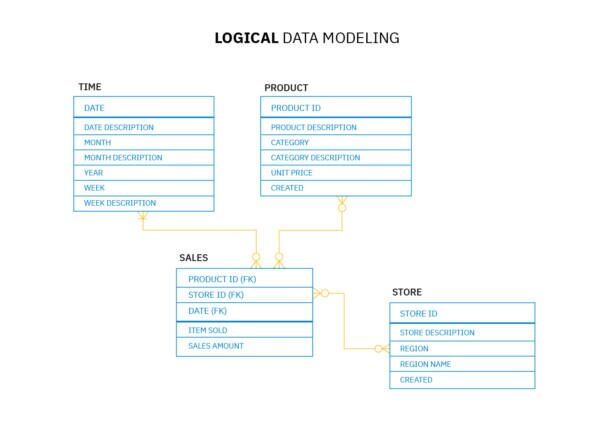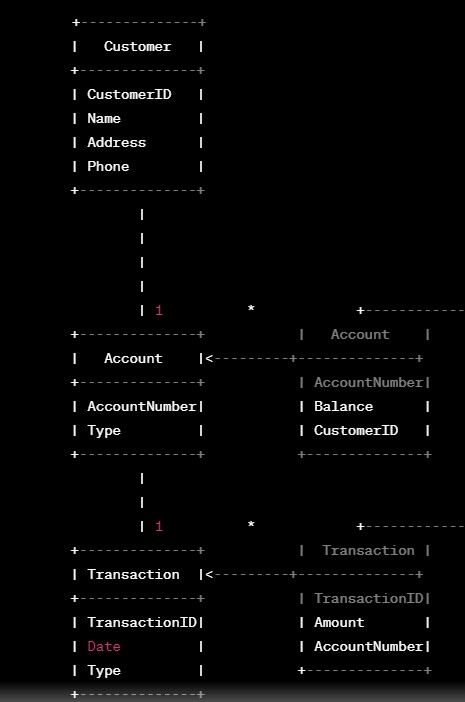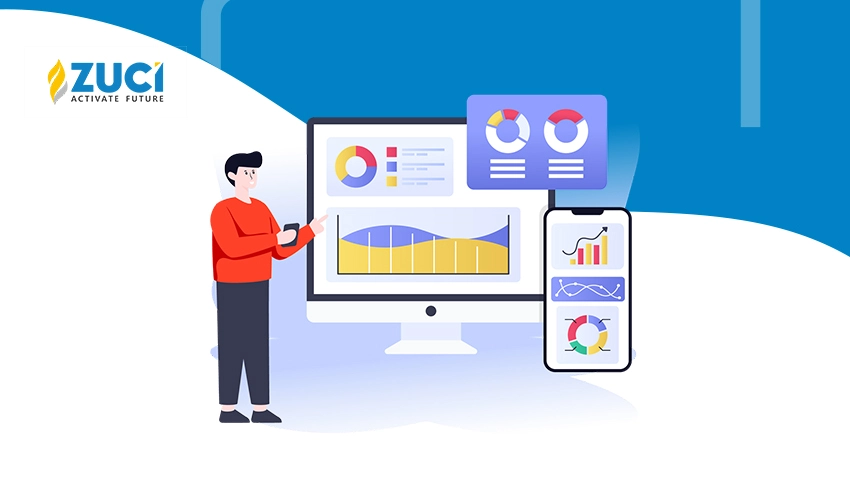Reading Time : 2 Mins
What is Data Modeling (And Why Is It important)?
I write about fintech, data, and everything around it
In this article, we‘ll cover the basics of data modeling, why it’s important to leverage, and the different kinds of data models you can create for your business to stand out over your competitors.
Information is a valuable resource. As time goes on, more and more bits of information are being created on a daily basis. Without a robust data engineering strategy, your business can experience lengthy delays, lost productivity, frustrated customers, and damaged business relationships.
Proper data management and data modeling have a significant impact on business growth as they can help companies garner information that can give them an edge over their competitors.
But still, data modeling remains a mystery to business stakeholders. Not anymore.
In this blog post, you will get an overview on:
- What is Data Modeling?
- Why is Data Modeling important?
- Importance of Data Modeling
- Types of Data Models
- Types of Data Modeling
- 10 Best Advanced Data Modeling Techniques
- How to Implement Data Modeling in Enterprise Architecture?
- Data Modeling Example in Banking Sector
- Steps in Data Modelling
- How to get started with Data Modeling?
Ok, let’s get started!
What is Data Modeling?
Data modeling is the most important step in any analytical project. Data models are used to create databases, populate data warehouses, manage data for analytical processing, and implement applications that enable users to access information in meaningful ways.
Data modeling is a process that you use to define the data structure of a database. In other words, it’s a technique that you can use to create a database from scratch. This could be for a simple database where you’re storing information about customers and products, or it could be for something much more complicated, such as a system that’s used to track sales trends across a global network of stores.
Data modeling is the process of transforming data into information.
Any information is useless unless delivered in a format that can be consumed by business users. And data modeling helps in translating the requirements of business users into a data model that can be used to support business processes and scale analytics.
A good data model should be able to answer all of these questions:
- What are our business processes?
- How do we structure our business information?
- What kinds of information do we use within these processes?
- What kinds of information do we store?
- Where does it come from? Where does it go?
Check out this video from our Associate Consultant, Spoorthy Reddy, to understand how data modeling is used to solve complex business problems. And how it improves data quality, helps identify business risks, and enables better decision-making for businesses (and business stakeholders). Watch the video and let us know your views or questions in the video comments section.
Why is Data Modeling important (And what are the benefits)?
Data modeling is an important stage of any software project because, without it, you cannot get a clear idea of what your database should look like and how your application will be built upon it.
Data modeling allows you to identify the possible relationships between different pieces of information, which will determine what type of queries can be run against that data.
Data modeling supports Business Architecture (a data model for an organization), which aligns business goals with technology goals. Data models also support other elements of Business Architecture such as Data Governance, Business Intelligence, and Application Architectures by helping to define their requirements at definition time.
If you don’t have a data model upfront, then you may end up with a system that doesn’t meet your users’ needs.
Importance of data modeling
Here are some of the major importance of data modeling:
- Organizes Data: Data modeling structures data in a logical and organized manner, making it easier to understand and manage.
- Improves Data Quality: Data modeling helps identify and rectify inconsistencies and errors in data, leading to better data quality.
- Ensures Data Integrity: Data modeling enforces constraints and relationships, ensuring data integrity and preventing data anomalies.
- Supports Decision Making: Well-designed data models provide valuable insights and support informed decision-making processes.
- Facilitates Database Design: Data modeling is a crucial step in database design, helping create efficient and optimized database structures.
- Reduces Redundancy: Data modeling minimizes data redundancy by eliminating unnecessary duplication of information.
- Simplifies Data Retrieval: A well-designed data model enables efficient and quick data retrieval, improving system performance.
- Enhances Application Development: Data models serve as a blueprint for application development, making it easier to integrate data into software solutions.
- Enables Scalability: A robust data model supports future growth and scalability, accommodating additional data without major disruptions.
- Promotes Standardization: Data modeling promotes standardization and consistency in data representation across the organization.
- Aids Data Governance: Data modeling facilitates data governance initiatives, ensuring compliance with regulations and data management policies.
- Supports Data Analysis: Data models provide a structured framework for data analysis and reporting, enabling meaningful insights.
- Encourages Collaboration: Data modeling encourages collaboration among business analysts, developers, and stakeholders in the data modeling process.
- Minimizes Development Errors: By defining data requirements upfront, data modeling reduces errors during the development phase.
- Long-term Investment: A well-maintained data model is a long-term investment that provides value throughout the lifecycle of the data and applications.
Here are just a few of the many reasons why it’s important for your applications to have a good data model:
Data Modeling Benefit #1: Higher Quality Applications
The most obvious benefit of data modeling is that it produces higher-quality applications, which are less likely to crash and easier for you to maintain.
If you’re not using data modeling techniques to build your applications (and chances are very good that you aren’t), here’s what happens:
- You take raw user input and stuff it into variables.
- You then manipulate those variables with code, creating new values that are then loaded into other variables.
- And so on, until you’re hopelessly nested several levels deep.
It doesn’t matter if your organization is big or small. If your application is written without any structure in place, the result is spaghetti code. And if you ever need to change it or add new features, all of your code will be a tangled mess.
Data Modeling Benefit #2: Reduced Cost & Time of Application Development
Data modeling has a huge impact on the cost and time it takes to build a new application. If your team does not have a data model, you will need to spend time gathering requirements from users and hand-coding the database structure.
If you do have a data model, it is much easier to add new tables and views because you can add them directly to your data model. While building an application, if you find that you need to add a table or modify an existing table, you can simply add it to your data model and update the existing application.
If you don’t have a data model, then your team will need to update both the database and the code. This can be very time-consuming and expensive if you need to make multiple changes across the entire application.
Data Modeling Benefit #3: Early Detection of Data Issues & Errors
In many cases, data issues and errors are not discovered until the process is running. For example, a user might go to make a purchase and get an error message saying “bad data.” In this scenario, the data was bad from the start. You can test it in a lab or on a test server, but you don’t discover the errors until the process is actually running in production.
The earlier you discover a problem with your data, the more time you have to correct it before it negatively impacts your users.
Many companies use a Data Modeling approach because it builds an accurate view of how your users interact with your business – down to details like which fields they access and how often they use them. This level of insight provides critical information about where problems exist and how best to employ corrections. By conducting regular Data Model Audits, you can ensure that your data model is continuously optimized for your users and their goals.
Data Modeling Benefit #4: Faster Application Performance
Data modeling isn’t just about saving money. That’s important, of course, but the real value of data modeling is that it makes your application run faster and more efficiently.
Data modeling is key to the performance of an application because it provides a high-level plan for how the application should handle data. This means that developers know what kind of data to expect and how it will be used and where in memory each piece of information will be stored. This means that they can write functions to retrieve data quickly and easily.
This is very different from just using tables to store data in an unorganized manner. By using unstructured tables, developers would have to spend time writing complex SQL queries that may or may not return what they’re looking for. By using structured tables, the database engine will already know how to find the information—and developers won’t have to worry about it.
The end result? Applications are better able to handle large amounts of data without slowing down.
Data modeling benefit #5: Better Documentation for long term maintenance
Data models help to define the business processes and their interrelationships. If all the data related to a business process is defined in a single place, it becomes easy to understand and maintain those processes long-term.
Data modeling also helps in documenting the business requirements and design of the application. The requirements and design can be better communicated if there is a single source for them. Also, changes that occur due to new requirements, enhancements, or bug fixes can be easily identified and implemented.
Data modeling is an important part of software development; it requires effort and expertise, but the benefits are worth it.
Types of Data Models
A data model is a blueprint that describes the internal structure of an organization’s information. Data models ensure that all internal information is consistent and can be easily accessed by authorized personnel or key business stakeholders.
A data model is created by examining how the information currently exists, identifying the entities within the system, and determining where they fit in relation to each other. It’s similar to an organizational chart, but instead of highlighting lines of authority, it shows how information is organized.
Data modelers use a variety of techniques to create models. Though, there are 3 main types of data modeling:
1. Conceptual Data Model
Conceptual data models are the foundation of every data model that’s created. They help you understand which entities exist in your business and how they relate to each other. Conceptual models don’t include the details regarding the specific attributes attached to an entity.

A conceptual model is a diagram that describes what your business does and how things work together. It’s a hierarchical view of entities and their relationships, and it’s usually created to give stakeholders a broad overview of the database. Data modeling tools can help you create a conceptual model for your database in no time at all.
Before you start creating a conceptual data model, there are some questions you should ask yourself: What is the purpose of your database? Who will be using it? How will it be used? This will help you determine which entities belong in your database and which relationships exist between them.
2. Logical Data Model
Logical Data Model focuses on how data is stored in an organization’s systems. The logical model describes how data moves between its source (for example, a person or another system) and its destination (for example, a database). It uses entities, attributes, relationships, cardinality, and constraints to describe the entity set for each table in a relational database.

The logical data model provides the foundation for creating physical data models. These can be used to define tables in relational databases or objects in object-oriented languages such as SQL, Java, or C++.
3. Physical Data Model
Physical data modeling is the process of defining the structure of a database schema to store information. The physical model is typically created by a database administrator or system analyst. It is used to create tables, indexes, and views, which are implemented through the use of Structured Query Language (SQL) statements.

The simplest form of data modeling involves creating models that describe how data should be stored in tables. These models are then implemented into one or more databases. A more complex form of data modeling involves creating a logical model that describes how data will be accessed and manipulated by end-users and applications that consume it.
Types of Data Modeling
Data modeling is a diagram of the logical structure of data within a database. Data modeling can help people understand data better, and people using data to predict future outcomes.
There are many ways of representing real-world objects in the software. The most common models are hierarchical, relational, unified modeling language (UML), entity-relationship, object-oriented, and dimensional data models.
1. Hierarchical Data Model
A hierarchical data model is a structure for organizing data into a tree-like hierarchy, otherwise known as a parent-child relationship.
In a hierarchical data model, each record is uniquely identified by a key, which is the same value for every record at the same level in the hierarchy.
A typical example is a sales order: it has many sales items, but each sales item can be associated with only one sales order. The sales order is the parent entity, and the sales item is the child entity.
2. Relational Data Model
A relational model contains nodes that are related to each other through links that contain relational data. These models are commonly used to create databases for storing and retrieving information quickly and easily.
The idea behind relational databases is to store all types of data in one table, as long as each column represents a unique piece of information about the entity.
A simple example would be a table for storing information about people. The table would have columns for the first name, last name, social security number, birth date, etc.
3. Entity-relationship (ER) Data Model
The Entity-relationship (ER) model is a method of representing your data in an organized way. The ER model breaks the data down into the following categories:
Entities: The objects, actions, or concepts that you’re working with. For example, customers, products, and sales are all entities.
Relationships: The connections between entities. These can be one-to-one or one-to-many relationships.
Attributes: Data that describes an entity or relationship. For example, the name of a product is an attribute of that product.
In order to create a solid ER model, you need to have a clear, detailed understanding of your business processes and information requirements for your users.
The ER diagram provides a visual representation of how your data is related and what processes need to be supported by the database. Also, it shows how these different types of data are related to each other. It’s a graphical representation of the underlying data model structure, which allows you to communicate complex information clearly and quickly.
4. Object-oriented Data Model
An object-oriented data model is a conceptual data model that uses objects to describe and define information. This is in contrast to an entity-relationship model, which describes information as entities linked by relationships.
Objects are real-world items that are made up of several attributes. For example, customers have names, addresses, phone numbers, email addresses, etc. If the data modeler were to use an entity-relationship model to describe these customers, these attributes would be stored in separate tables, with associations defined between the tables.
5. Dimensional Data Model
Dimensional data models are the foundation of business intelligence (BI) and online analytical processing (OLAP) systems. These models are typically implemented for data warehouses containing historical transactional data but can also be applied to smaller data sets.
Dimensional data models often reference multiple structures that include fact tables, dimension tables, and lookup tables. Dimensional modeling is the basis for creating enterprise data warehouses (EDW) and online transaction processing (OLTP) systems.
The main purpose of a dimensional model is to help users find answers to their questions about business forecasts, consumption trends, and other related questions quickly. Dimensional modeling provides an organized method for business intelligence reporting. It allows users to share information across different departments within an organization for effective collaboration and decision-making.
10 Advanced Data Modeling Techniques
Advanced data modeling techniques are more sophisticated approaches that cater to complex data scenarios and specialized requirements. These techniques are often used in large-scale data environments, data analytics, and advanced data management scenarios. Some of the advanced data modeling techniques include:
1) Multidimensional Data Modeling: This technique is used in OLAP (Online Analytical Processing) systems to model data in multiple dimensions, allowing users to analyze data from various perspectives.
2) Temporal Data Modeling: Temporal data modeling deals with data that changes over time. It includes capturing historical data, managing temporal relationships, and supporting temporal queries to track changes over specific periods.
3) Semi-structured Data Modeling: In scenarios where data does not fit neatly into a rigid schema, semi-structured data modeling techniques are used. Examples include JSON, XML, and NoSQL databases.
4) Data Vault Modeling: Data vault modeling is an advanced data warehousing technique designed for scalability, flexibility, and ease of integration. It focuses on historical data tracking and integrating data from multiple sources.
5) Graph Data Modeling: Graph data modeling is used for modeling data with complex relationships and networks. It is suitable for applications involving social networks, recommendation systems, and knowledge graphs.
6) Big Data Modeling: Big data modeling deals with massive volumes of data generated by modern applications and systems. It includes techniques for data partitioning, and optimization to handle big data efficiently.
7) Streaming Data Modeling: Streaming data modeling is used for processing and analyzing real-time data streams from sources like IoT devices or social media. It involves handling data in motion and making real-time decisions.
8) Machine Learning Model Design: In the context of machine learning, data modeling includes designing and training machine learning models to make predictions and classifications based on data.
9) Probabilistic Data Modeling: Probabilistic data modeling involves modeling uncertainty and probabilistic relationships in data, which is useful in areas like Bayesian statistics and machine learning.
10) Conceptual Blending: Conceptual blending is a cognitive modeling technique that combines different data sources or concepts to form new ideas or insights. It is used in creative problem-solving and innovation.
How to Implement Data Modeling in Enterprise Architecture?
Implementing data modeling in enterprise architecture involves a systematic approach to designing and implementing data structures and relationships across the organization. Here are the steps to effectively implement data modeling in enterprise architecture:
- Define Business Objectives: Understand the business objectives and requirements of the organization. Identify the key data needs for decision-making, reporting, analytics, and other business processes.
- Identify Data Sources: Identify the sources of data within the organization, including databases, applications, external systems, and data streams.
- Data Inventory: Create a data inventory to catalog and document the data assets available across the organization. This inventory should include data types, data owners, data formats, data flow, and data usage.
- Collaboration with Stakeholders: Collaborate with stakeholders from different business units, IT, data governance, and other relevant teams to gather requirements and ensure alignment with business needs.
- Data Governance: Establish data governance policies and procedures to ensure data quality, security, and compliance. Data modeling should adhere to these data governance guidelines.
- Select Data Modeling Approach: Choose the appropriate data modeling approach for the enterprise architecture. Depending on the specific use cases and requirements, dimensional data modeling, ER modeling, or other advanced data modeling techniques may be suitable.
- Data Documentation: Thoroughly document the data models and associated data dictionaries to ensure easy understanding and future reference.
- Testing and Validation: Validate the data models and perform testing to ensure accuracy, completeness, and functionality.
- Continuous Improvement: Data modeling in enterprise architecture is an iterative process. Continuously review and update data models as the organization’s needs evolve and new data requirements arise.
By following these steps, an organization can effectively implement data modeling in its enterprise architecture, leading to better data management, improved decision-making, and increased efficiency in data-related processes across the organization.
Data Modeling Example in Banking Sector
Let’s consider a simplified example of an Entity-Relationship Diagram (ERD) representing a data model for a bank. The data model will include three main entities: Customer, Account, and Transaction. Each entity will have its attributes, and relationships between entities will be established using lines connecting them.

data modeling example
In the above data model:
- Customer Entity: Represents bank customers. It has attributes like Customer ID, Name, Address, and Phone.
- Account Entity: Represents bank accounts held by customers. It has attributes like Account Number, Type (e.g., Savings, Checking), and Balance.
- Transaction Entity: Represents transactions made on bank accounts. It has attributes like Transaction ID, Date, Type (e.g., Deposit, Withdrawal), and Amount.
Relationships: The relationships are shown using lines connecting the entities. The “1 to * (one-to-many)” relationship between Customer and Account signifies that one customer can have multiple accounts. The “1 to * (one-to-many)” relationship between Account and Transaction indicates that one account can have multiple transactions.
Steps in Data Modelling
Data modeling can sound complicated, but it’s actually quite simple. It’s basically a process of asking questions and finding answers.
Here are the steps involved in data modeling:
- Review the business challenge
- Pull the right data from the business
- Collect and organize data
- Create a conceptual model
- Build the logical database design
- Build the physical database design
- Map stakeholders and their requirements of the data model
- Perform a gap analysis of requirements vs. datasets
- Deployment & documentation of results
- Measure & modify data model to meet changing requirements
The purpose of the data modeling process is to define and document how your business information should be modeled within the enterprise data architecture.
Make sure to go through each step to prevent errors when implementing a Data Model. The better you maintain data and data operations, the more efficient the data model would be.
How to get started with Data Modeling?
To have a successful Data Modeling Project, you must first create a data modeling strategy that will help you decide which types of data models to build.
A good data analytics strategy involves gathering and documenting information about the enterprise data architecture so that all stakeholders can understand what the current state of affairs is, as well as what the desired state should be.
Download our latest eBook: The Data Analytics Strategy Guide, which focuses on creating an effective data analytics strategy that will enable your organization to gain the insights needed to stay competitive in today’s business environment.
If you still think data modeling is complicated? We will help you get the results you want without all the frustration. Book a discovery service with our data architects today and get ahead of the competition. Make it simple & make it fast.
Related Posts
Related Posts





















